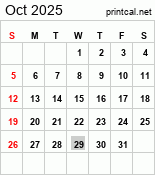South African Apartheid Referendum (17 March 1992)
Do you support continuation of the reform process which the State
President began on February 2, 1990, and which is aimed at a new
constitution through negotiation?
| Election results |
| Yes or no |
Votes |
Percentage |
 Yes Yes |
1,924,186 |
68.73% |
 No No |
875,619 |
31.27% |
| Valid votes |
2,799,805 |
99.82% |
| Invalid or blank votes |
5,142 |
0.18% |
| Total votes |
2,804,947 |
100.00% |
| Voter turnout |
85.08% |
| Electorate |
3,296,800 |
The
1992 referendum was held in
South Africa on 17 March of that year. In it, white South Africans
were asked to vote in the country's last whites-only referendum to
determine whether or not they supported the negotiated reforms begun by
State President F.W. de Klerk two years earlier, in which he proposed to end the
apartheid
that had been started in 1948. The result of the election was a large
victory for the "yes" side, which ultimately resulted in apartheid being
lifted.
Background
Nelson Mandela was released on February 11, 1990 from
Victor Verster Prison in
Paarl near
Cape Town. On March 21, 1990,
South West Africa became independent under the name of
Namibia.
In May the government began talks with the ANC. In June the state of
emergency was lifted and the ANC had agreed to a ceasefire. In 1991, the
Acts which restricted land ownership, specified separate living areas
and classified people by race were abolished.
Before the referendum
Prior to the referendum, the governing
National Party had lost three
by-elections since announcing negotiations to end apartheid two years earlier, and its position was opposed by the
Conservative Party which opposed the negotiations and boycotted the
Convention for a Democratic South Africa
(CODESA). On 24 January 1992, President F.W. de Klerk opened parliament
and suggested that a referendum would be held, in which the vote of
each race group would be counted separately. When the National Party was
defeated in the
Potchefstroom by-election on 19 February, after calling it a test vote, its credibility was placed in doubt.
In the meantime, negotiations between the government and the
African National Congress were making slow progress. Violence was increasing in the
South African townships, different
right wing
groups were becoming more prominent, and there was growing
dissatisfaction within the white community. Conditions and the mood in
the black townships was worsening as well. The government was thus under
domestic and international pressure to make progress in the
negotiations.
While the Conservative Party claimed that the government did not have the mandate to negotiate with the ANC after its defeat in
Potchefstroom,
State President F.W. de Klerk announced 20 February, that a national
referendum
for the white electorate would be held to test the government's — and
his own — support: if the referendum's outcome had been negative, de
Klerk would have resigned and
general elections held.
The campaign
The National Party and
Democratic Party
campaigned for a "Yes" vote, while the conservative right wing led by
the Conservative Party campaigned for a "No" vote. Much of de Klerk's
efforts in 1992 were directed toward appeasing and weakening his
right-wing
opponents, the conservative defenders of apartheid who had broken away
from the National Party during the 1980s. De Klerk attempted to show
white South Africans that the government was not giving up power to the
ANC, but negotiating on the basis of "
power sharing".
It warned the white voters that a "No" vote would mean continuation of
international sanctions, the danger of civil war and worsening chaos in
South Africa.
The National Party "Yes" vote campaign was of a kind that had never
before been seen in South Africa. The National Party held large
political gatherings through the country and published advertisements in
many national newspapers and bought commercial time in television. It
produced massive election "Yes" posters with the message "Yes! Ja! SA"
and a poster showing a picture of an
AWB member with a gun and with the text "You can stop this man! Vote YES".
The Democratic Party had more traditional posters with the message "Ja vir vrede (Yes for peace)".
The "No" campaign, led by
Dr Andries Treurnicht,
played on racial prejudices and warned of "black majority rule" and
"ANC communist rule". The Conservative Party also advocated white
self-determination and argued that white South Africans had the right to
rule themselves. During the campaign, the "No" side also started to
advocate an independent homeland, or
volkstaat, for the white minority.
When de Klerk initially announced the referendum, many were critical of the fact that only
whites had the right to vote in the referendum.
Result
The question asked was "Do you support continuation of the reform
process which the State President began on February 2, 1990, and which
is aimed at a new constitution through negotiation?"
The results, on a turnout of 85.1%, were:
| Result |
Number of votes |
Percentage |
| Yes |
1,924,186 |
68.73% |
| No |
875,619 |
31.27% |
Total number of votes: 2,804,947 out of 3,296,800
In
Cape Town and
Durban over 85% voted "yes" and in
Pretoria over 57% voted "yes". Only
Pietersburg in the
Northern Transvaal,
a rural right wing stronghold, voted "no" with 57%. Even in the
conservative stronghold, where five out of the seven parliamentary seats
were held by "No" campaigners,
Kroonstad,
the "yes" side won with 52%. Next day, President de Klerk said "Today
we have closed the book on apartheid" as he celebrated his 56th
birthday.
Nelson Mandela said that he was "very happy indeed".
The day after the referendum, the
Cape Times news bill was dominated by the large text "YES, IT'S YES!".
The alliance between the Conservative Party and the
Afrikaner Weerstandsbeweging
may have harmed the CP and in some cases even scared away voters to the
"Yes" side. Some conservative and militant defenders of apartheid
boycotted the referendum, although turnout was at record levels,
reaching above 96% in some areas.
De Klerk and his government could now claim that the whites were in
favour of universal suffrage and that they had a clear mandate to
negotiate with the
African National Congress.
The ANC had disliked the referendum, mainly because whites were the
only one allowed to vote. But the ANC realised that a "No" vote would
not only risk the negotiations but also increase the political chaos in
the country, and had no real reason to advocate that the whites oppose
the negotiations. The ANC therefore advocated a "Yes" vote.
The right wing criticized the referendum and accused the government of
electoral fraud. They had lost where they had been the strongest, in the
Afrikaner
heartland and in the big cities. Dr. Treurnicht claimed that media
propaganda, foreign intervention, threats by businesspeople against
employees and electoral fraud had resulted in a "Yes" vote. No evidence
has yet been put forward regarding electoral irregularities. However a
cursory examination of the SABC TV output at the time revealed a heavy
bias in favour of a YES vote. Almost all newspapers were hostile to a NO
vote.





